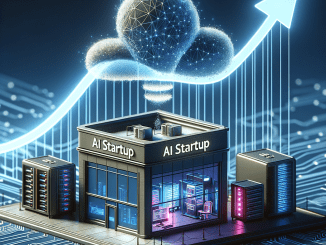
The article from Automation.com, titled “The Role of AI in Hyperautomation for Cybersecurity,” discusses the critical role of artificial intelligence (AI) in hyperautomation for enhancing cybersecurity. Here is a summary of the key points:
1. **Hyperautomation in Cybersecurity**:
– Hyperautomation is becoming essential for incident response, data aggregation, and threat detection in cybersecurity. It involves the rapid integration and deployment of automation tools, including robotic process automation (RPA) and AI.
2. **Addressing Skills Shortage**:
– The significant cybersecurity skill shortage, with 4 million openings in 2023, necessitates hyperautomation to alleviate the workload of security professionals. AI can add $6.28 trillion in productivity gains to the global GDP.
3. **Security Improvements**:
– Hyperautomation provides continuous, autonomous security monitoring, which is more secure than relying on human professionals working irregular hours. It helps prioritize and respond to alerts more effectively, allowing security professionals to focus on genuine threats.
4. **Automation and AI Integration**:
– The article highlights that nearly 35% of organizations have already automated their security processes. AI is crucial in quickly analyzing vast amounts of data to detect potential threats and vulnerabilities.
5. **Benefits of Hyperautomation**:
– Hyperautomation streamlines business processes by eliminating repetitive tasks and automating manual ones. It enhances consistency, accuracy, and speed, reducing costs and improving the customer experience. It also minimizes security gaps between modern and legacy systems.
6. **Challenges and Limitations**:
– While hyperautomation offers numerous benefits, it also presents challenges such as raw or poor-quality data and the lack of technical skills. Organizations need to address these issues through retraining programs and well-suited approaches.
7. **Future of Cybersecurity**:
– Hyperautomation is predicted to be a critical enabler in cybersecurity, helping organizations manage complex infrastructures and scale their operations efficiently. It is expected to deliver significant productivity and efficiency gains, making it a strategic technology trend.
8. **Real-World Applications**:
– Hyperautomated security systems can include AI systems reviewing emails for phishing attempts, document security systems using Optical Character Recognition to identify personally identifiable information, and machine learning solutions identifying suspicious log-in contexts.
In summary, the article emphasizes the importance of AI in hyperautomation for cybersecurity, highlighting its role in addressing the skills shortage, improving security monitoring, and streamlining business processes. It also discusses the challenges and future implications of hyperautomation in the cybersecurity landscape.





Be the first to comment